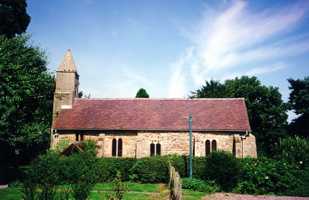 Stanton on the WoldsAll SaintsNottingham Archdeaconry East Bingham Deanery Introduction
Domesday does not record either a priest or a church at Stanton on the Wolds
The first rector was appointed in 1280. The church is built on the highest
point of the parish. The earliest fiscal reference to a church here is 1341
whilst the oldest fabric in the building is also fourteenth century. The font
may be of earlier Norman workmanship.
The medieval village lay between the church and the manor house to the west.
Following sixteenth century enclosure for sheep farming, the village houses
were dilapidated and the village became deserted.
The manor house, which belonged to the Clifton family, was occupied during
the seventeenth century and the early part of the eighteenth century by gentle
folk. Sir John Parsons lived there with his wife, Dame Catherine, a Clifton
heiress. He was buried in the chancel in 1704. Their successors, the Bowskill
family, were buried in the churchyard.
During the ensuing centuries, with no resident lord of the manor and the decline
of the manor house into a farmhouse, the church was allowed to deteriorate.
From the late eighteenth century, visiting historians described the building
as very poor. Restoration work, needed to re-open the church, was carried out
in 1830. A complete restoration was performed in 1889. Repair work was done
in 1951 after a successful appeal to save the ivy-covered church from closure.
A vestry was added in 1977.
The outward sloping walls are a notable feature of this church and, despite
the presence of late nineteenth century buttresses on the south wall, were
probably constructed this way. The reason for this form of construction is
not known. It is likely that some of the stone windows were reused from other
churches. In particular, close inspection of the east window reveals that its
width is about 10 cm. shorter than the opening into which it has been built.
Today, this lovingly cared-for small church lies across a field, formerly
part of the glebe and now containing a car park for the congregation. It is
approached from Browns Lane, along a driveway at the side of farm buildings.
Particular thanks to Sandra Ford, Jean Heald and Marjorie Penn
for research on this entry
and thanks also to Roy Butler, Graham Lott and Eric Turner for their assistance
|